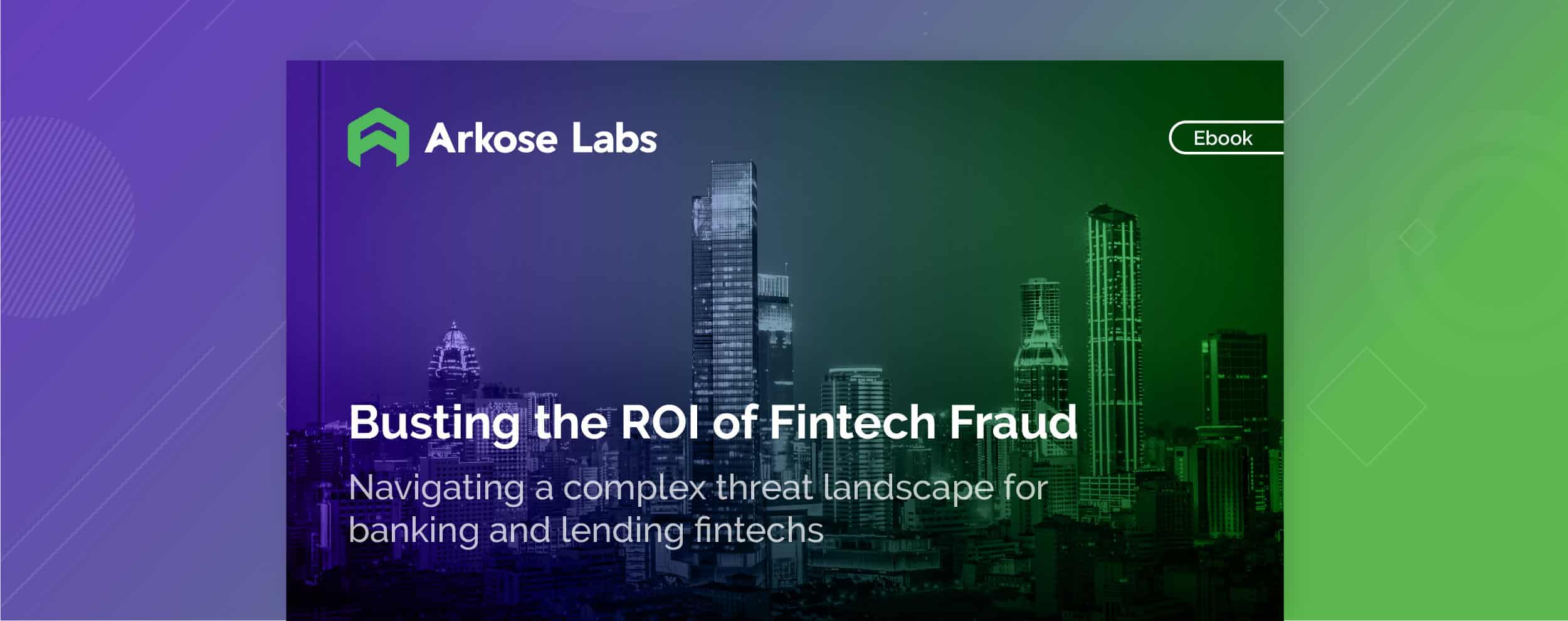There are ways to combat the rise of criminal and fraudulent activities within the fintech industry. But first, what can cybercriminals and fraudsters gain from targeting the fintech industry?
Looking for more information on this topic? Read our eBook below.
Why do cybercriminals target fintechs?
Fintechs are attractive targets to cybercriminals looking to turn a profit. While the potential for stealing an unsuspecting user’s money is often the lure, cybercriminals can use a variety of data inherent in the fintech sector for malicious purposes. In fact, cybercriminals will use information leaked in previous data breaches to their advantage. This includes using leaked or stolen user authentication or personal and sensitive information – like usernames, passwords, and email addresses – for follow-on attacks. This information, or credentials gleaned from a successful bot or phishing attack, can be used for some of the following downstream illicit activities and scams:
- Account takeovers (ATOs) and identity theft: Cybercriminals use stolen credentials to take over user accounts. This enables them to drain the account of money, reward points, or other important pieces of data tied to the account. Fraudsters can also use stolen accounts to commit money laundering.
- Application fraud: When cybercriminals leverage stolen or synthetic account information to create fake accounts on fintech platforms, including applying for credit.
- Bonus abuse: This occurs when fake users exploit weaknesses to steal promotional perks from financial services enterprises, like cash bonuses or rewards points.
Making matters more difficult for security teams tasked with fraud prevention, is that increased volumes of traffic across apps – including mobile banking – and website endpoints can be difficult to categorize as “good” or “bad.” Increased scrutiny of this traffic may inadvertently harm the user experience for legitimate customers. This is why it is imperative that fintech companies place renewed importance on detecting malicious human and non-human users with an eye towards mitigating the threat that they pose.
Detection is key for fraud prevention in the fintech industry
When it comes to stopping cybercriminals from targeting fintechs, fraud detection is half the battle. This is easier said than done, however, as cybercriminals are adept at mimicking good users to bypass defenses. Many of these sophisticated tools have become a major cybersecurity concern as they can now be bought and leveraged by cybercriminals.
The advent of cybercrime-as-a-service (CaaS) offerings have placed an additional burden on security teams. Would-be cybercriminals can now purchase cybercrime “solutions” online that allows them to conduct increasingly sophisticated attacks. For instance, a low-skilled fraudster can purchase bots to automate many of the steps required to capture credentials from legitimate users that can be used for ATOs. The growth of CaaS means that even more cybercriminals than before can target fintechs to steal both money and data.
Detecting these attacks is the first step to take before security teams can mitigate them. Using real-time signals at user account registration or log-in flows can help security teams to spot suspicious activity behind both human and non-human automated bot attacks. Modern solutions that provide machine learning (ML) decisioning based on global attack signatures can also be a key differentiator in the fight against cybercrime and fraud.
Threats can be stopped in real-time
Cybercriminals want to turn a profit, and will often take the path of least resistance to do so when conducting their attacks. That is why, once an attacker has been identified, security teams need to raise the stakes. Making an attack financially untenable for cybercriminals is usually the best way to make an attacker look elsewhere, and can preserve a fintech’s overall security posture. But how can this be accomplished?
Introducing real-time targeted friction on user touch points can stymie both human and automated bot attacks. This friction makes cybercriminals invest more time and money into their attacks. Ultimately, once a fraudster realizes that they won’t be able to profit as quickly – or easily – as they first envisioned, they will begin to realize that the attack is no longer worth their investment and discontinue their attack. This turns cybercriminal’s return on investment on its head and removes the economic incentive of their attack.
Arkose Labs secures financial institutions from cybercriminals
For fintechs and financial institutions looking to protect against the multitude of threats they face, there are many advanced solutions available. The right solution, however, ensures that businesses don't experience fraud-related reputational or financial loss. Arkose Labs understands the pressures facing security teams and provides long-term account protection and fraud prevention – combined with continuous monitoring – that makes attacks financially untenable for attackers while providing a secure, user-friendly experience for legitimate customers.
Arkose Labs’ platform uncovers the underlying intent of users - including risk scoring - before deploying its attack response. Targeted friction is applied to malicious users through Arkose MatchKey challenges that are variable in difficulty. Meaning that the more variables a cybercriminal must take into account, the more difficult it is for them to automate their attack via bots. While these challenges put a stop to attackers and potential fraudulent transactions, legitimate users often experience no friction at all.
Schedule a meeting with us to learn how Arkose Labs can partner with your business to prevent and reduce fraud, achieving long-term savings and better ROI.


